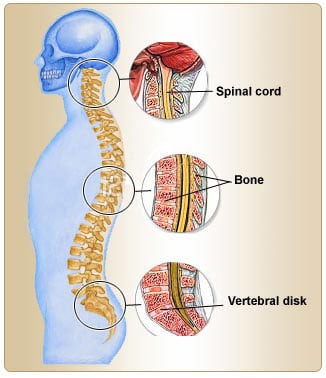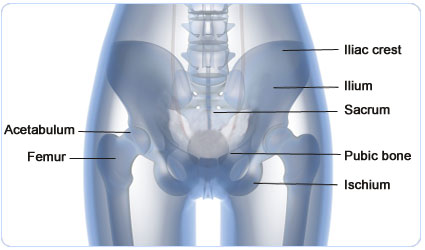We are born with about 300 to 350 bones but some of the bones fuse together as we grow and by the time we reach young adulthood we have on an average about 206 bones.
Advertisement
Bones: More than 206 bones support the body and provide
protection for organs such as the brain, heart and lungs. The bones of
the skeleton act as a frame to which muscles are attached. These
skeletal muscles allow the body to move; they are attached to bones by
bands of tough elastic tissue, called tendons, and it is by means of
tendons that they exert their pull. Another important task of bones is
to produce blood cells. Finally, the bones provide a store of
chemicals such as calcium salts, which are released into the
bloodstream, as they are needed.
Advertisement
Types of bones: -
Man has evolved with bones specialized into four main types, each with
a different role:-
1) The long bones: - eg:- in the limbs, they are thin, hollow and
light, they play as essential role in all types of movements.
2) Flat Circular bones: - eg:- bones that form the spine or vertebral
column
3) Long Circular Bones: - eg. Ribs, they are strong but elastic giving
the chest the flexibility and springiness it needs for breathing.
4) Flat irregular bones: - eg:- shoulder, blades, hips and skull these
are strong but light and protect delicate organs, such as the brain.
Advertisement
The framework of the body: -
The body owes its shape & support to the skeleton a frame
consisting of hundreds of jointed bones.
Head : The bones of the skull surround & protect the brain; the lower jaw is hinged to the skull.

Chest : The bony cage of the ribs, connected to the spine at
the back and the breastbone at the front, surround and protect the
organs in the chest.
 Arm :
Arm : The bones of the arms are jointed to sockets in the
shoulder blades.
Spinal Column : The 7 vertebrae in the neck and the 20 in the back
make the spinal column.
 Pelvis :
Pelvis : The bones of the pelvis surround the lower abdominal
organs, support the spine and provide attachment for the legs.
 Hand :
Hand : Eight bones make up the wrist, five the palm, and 14
hinged bones form the fingers and thumb.
 Leg :
Leg : Three major leg bones are suspended by ball and socket
joints from the pelvis
 Foot :
Foot : The bones of the foot form arches, so that the weight is
carried on the heel and toes.
 Muscles:
Muscles:
There are about 650 muscles in the body, and they are divided into
three different types, skeletal, visceral and cardiac The skeletal
muscles move the arms, legs, and spine The visceral muscles control
movements in the walls of blood vessels, the stomach and intestines.
The cardiac muscles produce the pumping action of the heart. All the
muscles are present in the body at birth, and everyone has the same
number of muscles, consisting of the same number of fibres.






